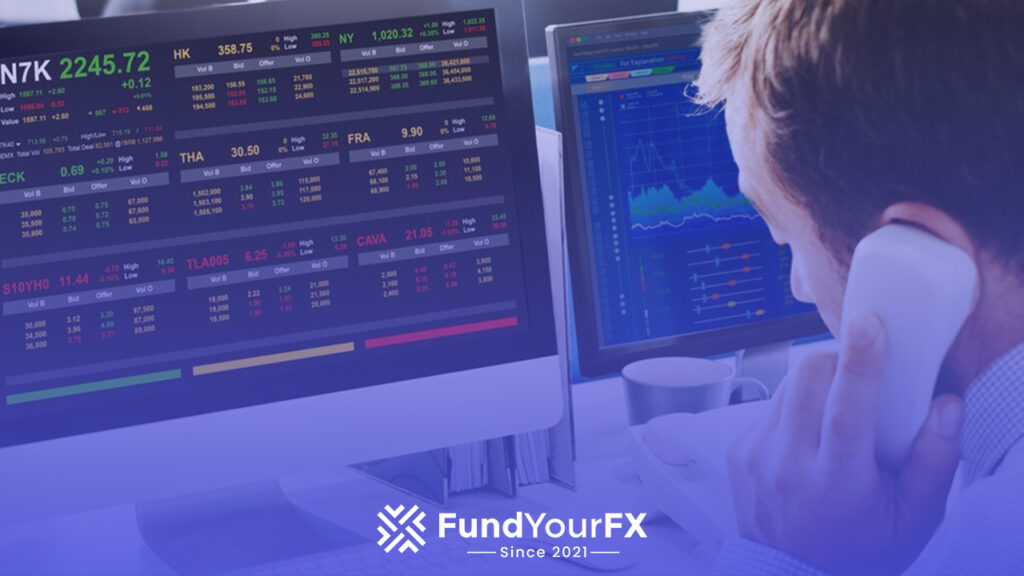Forex trading has gained popularity for its promise of substantial profits, the excitement of engaging in a global financial market, and the independence it offers. However, the question remains: Is forex trading a viable route to wealth, or does it often lead to financial pitfalls? This article will explore the benefits, risks, and necessary skills for success in the fast-paced world of forex trading.
What is Forex Trading?

The foreign exchange market, often called forex or FX, is the largest financial market in the world. It allows for the continuous trading of currencies, which is essential for international trade and investment. Businesses and individuals use this market to exchange currencies for various reasons, including buying goods from other countries, traveling, or speculating on currency price changes.
Forex is known for its high liquidity, meaning that assets can be quickly bought or sold without causing a significant impact on their price. This market offers investors the chance to earn substantial returns. One of the key advantages of forex trading is that it operates 24 hours a day, five days a week, enabling traders to engage in currency transactions across different time zones at any time.
Is Forex Trading Profitable?
Forex trading can be an exciting way to earn passive income, as the market is open 24 hours a day, five days a week. This continuous operation provides countless opportunities for traders around the globe. Some of the key advantages of forex trading include high liquidity, which means you can buy and sell currency pairs quickly, often with low transaction costs. Additionally, the market sees frequent price movements, allowing traders to capitalize on fluctuations in different time zones—from Sydney to New York.
One of the most appealing aspects of forex trading is leverage. This enables traders to control larger positions with a relatively small investment. While this can amplify your profits, it also increases the risk of significant losses. Therefore, understanding how to manage risk is crucial when engaging in forex trading.
Success in the forex market largely depends on your knowledge, trading strategy, and ability to manage risk. Skilled traders who can accurately forecast market trends and maintain discipline can achieve impressive returns. Advanced trading platforms, such as JForex 4, can also enhance your trading experience by allowing you to automate strategies and conduct in-depth market analysis.
However, it’s essential to be aware of the risks involved. Research shows that over 80% of retail investors lose money when trading forex and CFDs. The potential for high leverage means that losses can quickly exceed your initial investment. The market’s volatility can lead to sudden price swings, making it difficult to maintain steady profits. Moreover, lack of proper risk management and emotional control can result in substantial financial setbacks.
How Profitable is Forex Trading?
Forex trading can be a rewarding venture, but it’s important to grasp the factors that influence profitability. Let’s break it down using a straightforward example.
Initial Investment and Leverage
Imagine you start with an investment of $1,000. If you use a leverage of 1:50, this means you can control a larger position size—up to $50,000. For this example, let’s say you decide to allocate 2% of your total capital for each trade, which translates to a position size of $1,000.
Trading Strategy and Market Conditions
Now, let’s consider your trading strategy. Suppose your approach yields a steady average profit of 1% per trade. With a $1,000 position, a 1% gain means you earn $10 per trade.
Number of Trades
If you’re active and manage to make 10 trades in a month, each netting that 1% profit, your total monthly profit would reach $100. That’s $10 from each trade multiplied by 10 trades.
Risk Management
Risk management is crucial in trading. In this scenario, you’re looking at a risk of 2% of your trading capital per trade. This means if a trade doesn’t go your way, you could lose $20 (which is 2% of your $1,000) per trade, not counting any broker fees.
This example illustrates the potential for profit in forex trading, but it’s vital to maintain realistic expectations. The forex market is speculative and can be unpredictable. Your actual earnings will depend on your trading skills, market conditions, and your ability to stick to your trading plan. Always remember that effective risk management is key to protecting your capital while pursuing profits.
What Makes Trading Profitable?
Forex trading presents a unique opportunity for investors, offering the potential for significant profits. With its high liquidity, extensive market hours, and the ability to leverage investments, it has become a popular choice for both beginners and seasoned traders.
Leverage
One of the standout features of forex trading is the use of leverage. This means you can control a larger amount of currency with a smaller initial investment. For instance, if you predict that the Euro will increase in value and use a leverage of 1:200, a mere 1% rise in the Euro could result in a 200% profit on your investment. However, it’s important to remember that while leverage can amplify your gains, it can also magnify losses. Therefore, effective risk management is essential.
24/5 Market Access
The forex market operates around the clock—24 hours a day, five days a week. This constant availability allows traders to respond quickly to global events influencing currency values. For example, if a central bank unexpectedly raises interest rates, the corresponding currency may strengthen. With the ability to trade anytime, you can enter or exit positions swiftly to take advantage of such developments.
High Liquidity
Forex is the largest financial market in the world, characterized by its exceptional liquidity. This means that currencies are bought and sold in vast quantities, allowing for smoother transactions. Unlike some stock markets, where trading volumes can be limited, forex provides flexibility in entering and exiting trades. This is crucial for managing both risks and potential profits effectively.
Profit from Market Movements
Forex trading also offers a unique advantage: the ability to profit from both rising and falling currency values. If you believe a currency will increase in value, you can open a “long” position. Conversely, if you expect a currency to drop, you can enter a “short” position. This flexibility creates more opportunities for traders to make profits, regardless of overall market trends.
Low Initial Investment
Getting started in forex trading is relatively easy, thanks to low initial deposit requirements set by brokers. For example, Dukascopy Bank allows you to open an account with as little as $100. This low barrier to entry enables new traders to practice and refine their strategies while minimizing financial risk.
What Makes Trading Not Profitable?
Forex trading can be an exciting way to make money, but it also comes with substantial risks that can lead to losses. To successfully navigate this complex market, traders need to be aware of the main challenges they might face.
- Emotional Trading
One of the biggest pitfalls in forex trading is letting emotions dictate your decisions. Feelings like fear, greed, and impatience can lead to impulsive actions. For instance, a trader might close a winning trade too early out of fear, or cling to a losing trade too long due to greed, hoping for a turnaround. To combat this, it’s essential to have a solid trading plan and stick to it, which helps maintain emotional control and encourages more logical decision-making.
- Lack of Knowledge and Experience
Forex trading is not something you can dive into without proper knowledge. Understanding market dynamics, including both technical and fundamental analysis, is crucial. Beginners often make mistakes such as trading too frequently, failing to diversify their investments, or disregarding a structured trading plan. To improve your chances of success, invest time in learning, use demo accounts to practice, and gain experience gradually.
- Choosing the Wrong Broker
Picking the right broker can significantly impact your trading success. Be cautious of dishonest brokers who may operate illegally, as this can jeopardize your investments and even lead to losing all your capital. Untrustworthy brokers might manipulate spreads, execute trades at unfavorable prices, or refuse to release your funds. To avoid these issues, do thorough research when selecting a broker. Look for one with a strong reputation, proper regulatory oversight, and favorable trading conditions. A reliable broker should provide transparent operations, responsive customer support, and a dependable trading platform.
- Poor Risk Management
Effective risk management is essential for long-term success in forex trading. Neglecting this aspect can lead to significant financial setbacks. Common mistakes include not setting stop-loss orders, risking too much capital on a single trade, or failing to diversify your portfolio. Without proper risk controls in place, a few bad trades can wipe out your profits or even your entire account. Successful traders use strict risk management strategies, such as limiting the amount of capital risked on any one trade and ensuring their portfolio is well-diversified.
10 Most Profitable Forex Trading Strategies

To succeed in forex trading and achieve consistent profits, traders can use a variety of tried-and-true strategies. Here are 10 effective approaches that can lead to successful trading when applied correctly:
This strategy involves identifying the direction of the market trend (upward or downward) and trading in that direction. Traders often use indicators like moving averages, the Average Directional Index (ADX), or trendlines to identify trends.
- Breakout Trading:
Breakout trading involves entering a trade when the price breaks through a significant level of support or resistance. Traders often look for high volatility and increased volume to confirm a breakout.
- Range Trading:
In a range-bound market, traders identify support and resistance levels and buy at the support level and sell at the resistance level. This strategy is effective in sideways markets where prices fluctuate within a defined range.
- Carry Trade:
This strategy involves borrowing money in a currency with a low interest rate and investing it in a currency with a higher interest rate. The profit comes from the difference in interest rates, along with potential currency appreciation.
- Scalping:
Scalping is a short-term trading strategy where traders make small profits from numerous trades throughout the day. Scalpers typically hold positions for a few seconds to a few minutes and rely on high liquidity and tight spreads.
- Swing Trading:
Swing trading focuses on capturing short- to medium-term price moves. Traders hold positions for several days to weeks, using technical analysis to identify potential reversal points.
- Position Trading:
This long-term strategy involves holding trades for months or even years. Position traders analyze fundamental factors and trends to make informed decisions, often disregarding short-term price fluctuations.
- News Trading:
Traders using this strategy capitalize on volatility caused by economic news releases or geopolitical events. This requires a good understanding of economic indicators and the potential impact on currency pairs.
- Price Action Trading:
Price action traders analyze historical price movements and patterns without relying on indicators. They focus on candlestick patterns, support and resistance levels, and market sentiment to make trading decisions.
- Algorithmic Trading:
This involves using automated trading systems or algorithms to execute trades based on predefined criteria. Algorithmic trading can eliminate emotional decision-making and allows for backtesting strategies using historical data.
Remember that no strategy is foolproof, and all trading involves risk. It’s crucial to find a strategy that fits your personality, risk tolerance, and trading style.
Conclusion
Forex trading can be a lucrative venture, but it comes with its fair share of risks. To succeed in this market, traders need a solid strategy, disciplined risk management, and a commitment to ongoing learning.
While some traders enjoy significant profits, others may experience substantial losses due to the unpredictable nature of the market and emotional decision-making. It’s essential for anyone considering forex trading to set realistic expectations and be ready to adapt to ever-changing market conditions.
Ultimately, how profitable you become in forex trading hinges on your skill level, experience, and ability to effectively manage risks. With dedication and a proactive approach, traders can navigate the complexities of forex and work towards achieving their financial goals.






